Scandalous 16th Century Italian Murders

Desdemona was not the only celebrated woman murdered by her husband in 16th century Italy. There were many others and here are some of them. A few have stayed around as ghosts. First, there was Laura Lanza, Baroness of Carini (in Sicily), and her lover Ludovico, who were murdered in their bed in 1563, in this castle overlooking the town. She was 34.
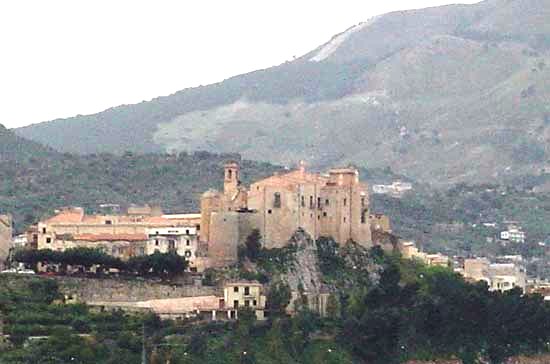
The killers, it is believed, were her father and her husband. They were motivated not so much by the idea of adultery, since the affair had been going on for years, but by her husband’s desire to remarry and her father’s concern that if Laura became pregnant to Ludovico, the child might inherit the family fortune. Laura’s marriage had been an arranged one in the first place, and there seemed no prospects of a legitimate heir. Her father confessed to the killings in a letter to Philip II of Spain and he was exonerated since it was considered an honor killing. Perhaps her father accepted the blame to shield the husband?
The murdered couple are believed to be buried in the crypt of the town’s church, while Laura’s ghost is said to wander the castle. Interestingly, the case was reopened a few years ago but apparently nothing conclusive emerged.
Then there were the murders associated with Paolo Giordano Orsini and the Medicis of Florence. The Orsinis were one of the great Roman families and by the 16th century their main power base was in Bracciano, north of Rome. In 1558, Paolo married the cosmopolitan Isabella Romola de' Medici. They are shown below. Paolo murdered Isabella in 1576 when she too was 34.
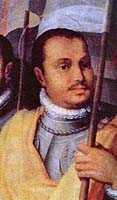
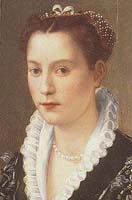
Throughout most of their married life she had continued to live in Florence while he remained close to Rome. Once her influential father was dead, she became vulnerable and it appears Paolo strangled her in the remote (at the time) Villa di Cerreto Guidi (shown below). He alleged that she had had an affair with his cousin Troilo Orsini, who was murdered in Paris a few months later. We assume Paolo's frustration was building for a while, but they both had many affairs. The Villa di Cerreto Guidi is north of the Fucecchio Marshes, on the road between Florence and Pisa. It is now a museum.
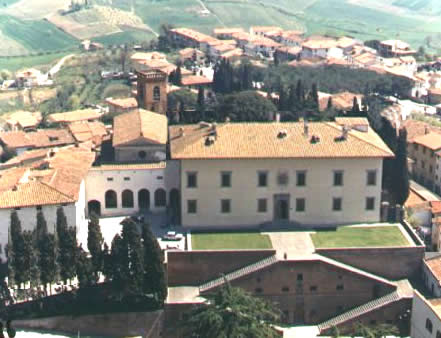
Worse, this murder was only six days after Isabella’s younger sister-in-law, Eleonora di Garzia di Toledo was strangled with a dog leash by her husband, the severely disturbed Pietro de' Medici (Isabella's younger brother) for committing adultery They are shown below.

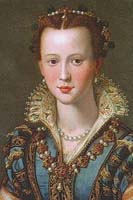
Did this murder precipitate the second, of Isabella? The two women had been close and Eleonora was only 23. It occurred at one of the primary Medici residences, the Villa Medicea di Cafaggiolo (below) in the hills north of Florence. Today it is privately owned and rented out.
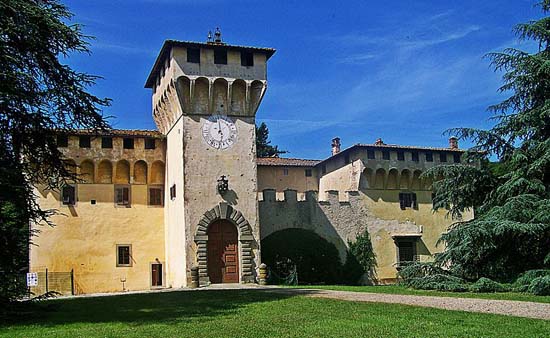
The news of the murders quickly got out. The new Grand Duke of Tuscany, Francesco I, (shown below) was Pietro's and Isabella's older brother. He first tried to cover up the murders and then, failing that, eventually banished Pietro, and Paolo fled. But an issue now hotly debated by historians is: how complicit was Francesco in the two murders? These were close family members after all.

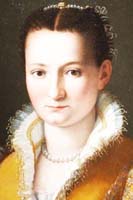
Francesco had his own complicated relationship with his mistress (and later his second wife), Bianca Cappello, shown above. It would become the subject of Thomas Middleton's play, Women Beware Women (1658). Modern exhumations seem to confirm that Francesco and Bianca died the same day in 1587 from malaria, after years of rumors they had been poisoned with arsenic.
Another sister, Lucrezia de' Medici, had died years earlier at the age of 17, either from tuberculosis or poisoning, and she may have inspired Robert Browning's poem My Last Duchess (1842) - more here. Francesco's daughters married well.
Meanwhile, back to Paolo Giordano Orsini who was now on the run. He lived for a time in Rome, where he became involved with the bewitching Vittoria Accoramboni (below), who was married. That presented no obstacle. Her husband was murdered in 1581 and suspicion fell on her, her family and Paolo Giordano...

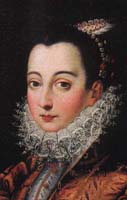
Now, with both Florentine and Papal authorities after him, Paolo fled north to the Venice area with Vittoria. They were married in 1585, but Paolo was dead by the end of the year, at Salò on Lake Garda (below). In his will he left houses and large sums of money to Vittoria.
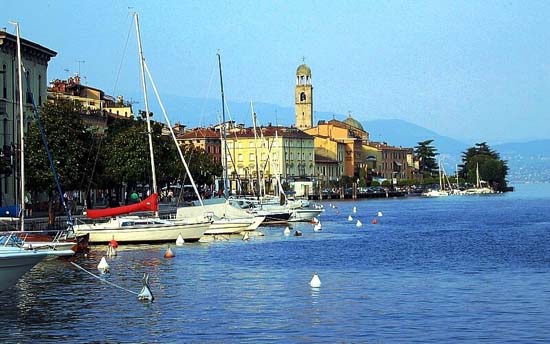
The timing would appear to indicate that although Paolo was ill and overweight, Grand Duke Francesco de' Medici may have had him poisoned. Why? Because the new marriage reduced the wealth of Virginio, Paolo's son by Isabella, who was now studying in Florence.
This theory would seem to be confirmed in that Vittoria moved to Padua (the city's famous square, Prato della Valle, is shown up top), where she was murdered a month later by Ludovico Orsini, one of Paolo's cousins. Confused yet? It doesn't really matter. These murders could have been at the instigation of the Medicis. Ludovico was newly in the service of the Venetian authorities, and this murder crossed the line in their eyes, as Medici interference. Ludovico was caught (with his many accomplices) in Venice and the whole lot of them were executed.
The story became the basis for John Webster's play The White Devil (1612) - Vittoria is the white devil - as well as reflections by Stendhal, Dickens and others, most of whom wondered what role the ambitious Vittoria played in the murder of her first husband.
